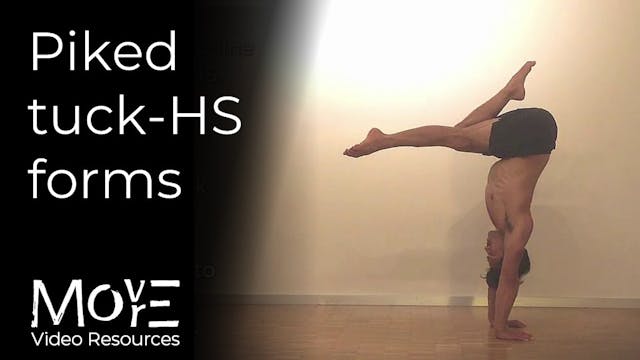Straight-line to Tuck-handstand
Handstand balance contexts
•
2m 1s
THE WHAT:
Once both 'straight-line' and 'tuck-HS' forms have been developed, putting them together allows for practice of dynamic balance work. This also develops your understanding of the differences between straight-line & tuck (namely the need to shift into COUNTERBALANCE for the latter), refining your proficiency in each form and in the transition between them.
It is advised to have consistent 30-second holds in both straight-line and tuck before practicing this drill as, rather than focusing on maintaining balance in the individual, static forms, work here is instead developing the transition BETWEEN them in DYNAMIC balance, rather than a static hold.
LEARN MORE (subscriber-only):
https://drive.google.com/file/d/1Ahd7fA4KHRCh3PSu3Th4TYYdkqyRoIBL/view?usp=drive_link
________________________________
For programming, guidance, & support for your physical practice:
FREE fundamental prehabilitation program: https://www.movemoremp.com/
Online Support (1 to 1 coaching): https://movemoremp.com/onlinesupport/
Elements (standardised programs): https://www.movemoremp.com/elements-store/
[email protected]
Up Next in Handstand balance contexts
-
Piked tuck-handstand forms
THE WHAT & WHY:
The 'piked' tuck-HS is a progressive tuck-HS variation in which the legs are extended fully. As such, the "load" to the front of the body (that which is normally the BENT legs in the fundamental 'tuck-HS) is greater and, consequently, more strength application to maintain the open...

